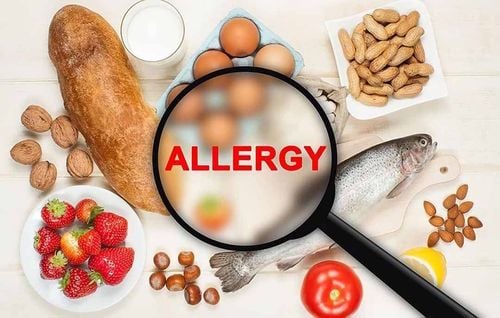This is an automatically translated article.
Food intolerance is a general term used to describe a wide range of adverse reactions to foods, including allergic reactions, adverse reactions due to enzyme deficiencies, pharmacological reactions, and other adverse reactions. other undefined response
1. What is a food intolerance?
Food intolerance is a general term used to describe a wide range of adverse reactions to foods, including allergic reactions (eg, peanut allergy or celiac disease), reactions adverse reactions due to enzyme deficiencies (eg, lactose intolerance or hereditary fructose intolerance), pharmacological reactions (eg, caffeine sensitivity) and other unspecified responses.Food intolerance does not include food poisoning caused by bacteria and viruses, molds, chemicals, toxins and irritants in food, nor does it include food aversions (dislikes and followed by avoiding different foods). A food intolerance reaction is usually a reproducible adverse reaction to a particular food or food ingredient, which can occur whether or not the person realizes they have eaten the food. This is the basis of a 'gold standard' trial, a double-blind, placebo-controlled trial in which neither the subject nor the operator know which tests contain allergens and which are placebo .

Bệnh celiac là một biểu hiện của không dung nạp thực phẩm
2. What is a food allergy?
An allergic reaction to a food can be described as an inappropriate response of the body's immune system to the ingestion of a food that most people do not cause side effects.Allergic reactions to foods vary in severity and can be fatal. In a food allergy, the immune system does not recognize as safe protein components of foods to which the individual is sensitive (such as certain peanut proteins, milk, and eggs). This ingredient is called an allergen. The immune system then normally produces immunoglobulin E (IgE) antibodies against the allergen, triggering other cells to release inflammatory substances.
Allergic reactions to foods are often localized to a specific part of the body and symptoms may include upset stomach, rash, eczema, itchy skin or mouth, swelling of tissues (eg. : lips or throat) or difficulty breathing. A severe reaction can lead to anaphylaxis (such as a severe peanut allergy), in which blood pressure drops rapidly and shock is severe.

Có một số loại thực phẩm gây dị ứng
3. Cause
Food allergies are more common in children, especially those under the age of three, than in adults. Although 20-30% of people self-identify as intolerant or allergic to one or more foods, the true percentage is believed to be much less than this number, although the exact number is unlikely. sure. Some reports suggest that reproducible food intolerances affect no more than 5-8% of children and less than 2% of adults.
Causes of food intolerances include:
Lack of an enzyme needed to fully digest a food. Lactose intolerance is a common example. Irritable bowel syndrome: This chronic condition can cause cramping, constipation, and diarrhea. Recurrent stress or psychological factors: Sometimes just thinking about a dish can make you sick. The reason is not fully understood. Celiac Disease: Celiac disease has some features of a true food allergy because it involves the immune system. Symptoms often include gastrointestinal problems as well as those not related to the digestive system, such as joint pain and headaches. However, people with celiac disease are not at risk for anaphylaxis. This chronic digestive condition is triggered by eating gluten, a protein found in wheat and other grains.

Táo bón là biểu hiện của tình trạng không dung nạp thực phẩm do hội chứng ruột kích thích
4. Advice for moms
During pregnancy and while breastfeeding: if mothers wish to eat peanuts or peanut-containing foods while pregnant or breastfeeding they may choose to do so as part of their diet drink a healthy balance, unless they themselves are allergic to peanuts.
When introducing peanuts into the baby's diet: all mothers should strive to exclusively breastfeed their babies for the first 6 months of life. The revised advice states that if a mother chooses to start giving her baby solid foods before 6 months of age, she should not feed her baby peanuts or other potentially allergenic foods (such as nuts or seeds). seeds, milk, eggs, wheat, fish or shellfish) before six months of age. When these foods are finally introduced, they should be introduced one at a time so that any allergic reactions can be identified.
If the child already has another type of allergy (eg, diagnosed eczema or diagnosed allergy to foods other than peanuts), or if there is a history of allergies in the child's immediate family (father mothers, siblings) mothers should talk to their family doctor, health practitioner or allergist before giving peanuts to their children for the first time, as these children are at high risk peanut allergy.
All persons known to be sensitive to peanuts should carry prefilled adrenaline syringes and (except young children) be trained in their use. Caregivers of children at risk of anaphylaxis, including schools, must be trained in the use of adrenaline and access to supplies. Even a slight delay in the use of adrenaline can be fatal.
Please dial HOTLINE for more information or register for an appointment HERE. Download MyVinmec app to make appointments faster and to manage your bookings easily.













